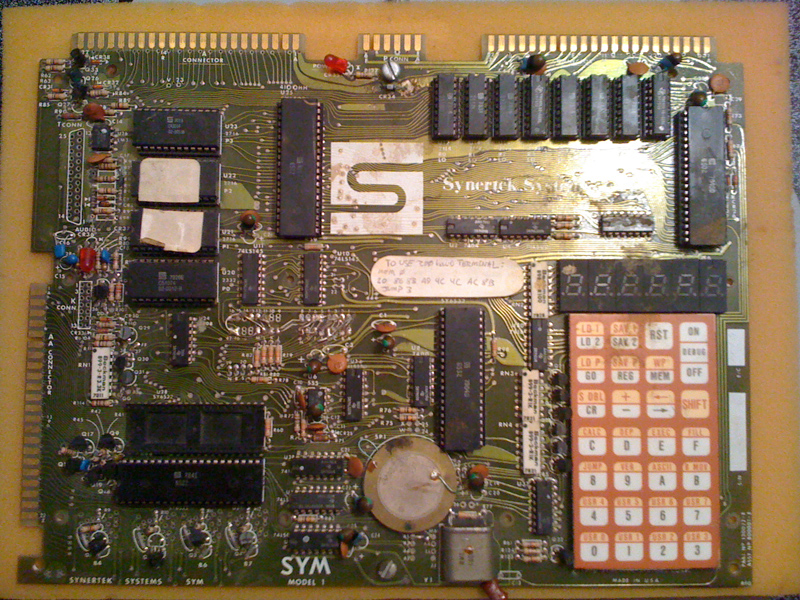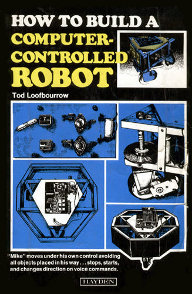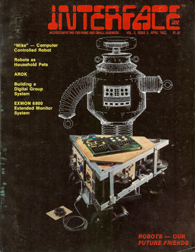
Synertek’s SYM-1 microcomputer, programmable from the hex keypad, with 6-digit LED readout.
The SYM-1 appears to be dead. It does not give its customary “beep” when powered up, the display remains blank, and there is no response to any key presses. Further, some of the chips appear to have rotted. I have removed it from Microtron in preparation for the robot’s long-awaited system upgrade. Also gone are the original A/D converter circuitry, the bumper-hit detection circuitry (both circa 1982), and a slew of old wires.
My current thought regarding most of the legacy circuitry is to keep boards if they work; remove or replace them only when needed.

 "How to build a computer-controlled robot" (amazon)
"How to build a computer-controlled robot" (amazon) 1977 Interface Age Article (pdf)
1977 Interface Age Article (pdf)